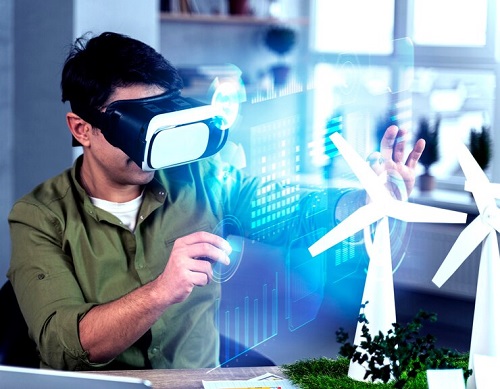In today’s digital age, technology has been rapidly advancing, transforming various industries and revolutionizing processes. One of the most groundbreaking advancements in this regard is the emergence of computer vision technology. This innovative technology has the potential to reshape industries, automate processes, and enhance efficiency through advanced visual recognition and analysis.

Computer vision is a branch of artificial intelligence (AI) and machine learning that enables machines to interpret and understand the visual world. By using digital images or videos, computer vision systems can identify and analyze patterns, objects, and even human activities. This capability has far-reaching implications across a wide range of industries, leading to significant advancements in areas such as healthcare, manufacturing, retail, agriculture, and more.
In the healthcare industry, technology is revolutionizing medical imaging and diagnostics. Advanced algorithms can analyze medical images such as X-rays, MRIs, and CT scans with remarkable accuracy, aiding healthcare professionals in detecting and diagnosing various conditions. Additionally, vision systems can assist in monitoring patient vital signs and identifying potential health risks, ultimately improving patient care and outcomes.
In the manufacturing sector, computer vision is transforming production processes and quality control. By integrating computer vision systems into manufacturing facilities, companies can automate inspection tasks, detect defects in products, and ensure compliance with quality standards. This not only enhances efficiency but also reduces the likelihood of errors, leading to cost savings and improved product quality.
Moreover, in the retail industry, technology is being utilized to enhance the customer experience and optimize operations. Retailers can leverage computer vision for tasks such as inventory management, facial recognition for personalized marketing, and cashier-less checkout systems. These applications streamline processes, minimize human error, and provide valuable insights into consumer behavior and preferences.
In agriculture, computer vision is playing a pivotal role in precision farming and crop management. By analyzing aerial imagery and satellite data, farmers can monitor crop health, identify areas requiring attention, and optimize resource allocation. This enables more efficient and sustainable agricultural practices, leading to increased yields and reduced environmental impact.
The potential applications extend to various other industries, including transportation, security, and entertainment. From autonomous vehicles and surveillance systems to augmented reality experiences, computer vision is driving innovation and transforming the way we interact with the world around us.
As computer vision continues to advance, its impact on industries will only grow more profound. The integration of this technology into everyday processes has the potential to revolutionize entire sectors, unlocking new opportunities for efficiency, automation, and innovation.
In conclusion, computer vision technology is reshaping industries and revolutionizing processes with its advanced visual recognition and analysis capabilities. From healthcare and manufacturing to retail and agriculture, the transformative potential of computer vision is evident across a wide spectrum of industries. As businesses and organizations continue to embrace this technology, we can expect to witness unprecedented advancements and improvements in various facets of our lives.


